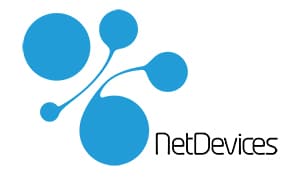Would you like to develop a application ?
You're wondering whether to opt for native application , hybrid application or no-code.
The answer from NetDevices is simple. It depends on several factors.
Whether for a startup or a project in a larger structure, the choices can have an impact on the ability to deliver at the right time and to the right budget, adapting to objectives and ensuring that essential functionality is in place.
We will analyze the different approaches while summarizing the advantages and disadvantages.
Native developments
A application native application is a mobile device application specially designed and developed for a particular operating system. For example, that of the device in question.
So a application native Android requires an Android device and a application iOS works on iOS devices. Android apps are found in the Google Play Store, while a application native iOS app is found in the App Store.
Development teams create native applications for iOS and Android mobile devices. To do this, they use programming languages (e.g. Java or Kotlin and Objective C or Swift).
👍 Benefits These applications guarantee the best possible performance, speed and user experience on the operating system (iOS or Android).
A native application can also access all the specific functions of the device, including information and hardware; for example the phone's camera, push notifications and GPS.
👎 Disadvantages The disadvantage is that you need two teams of developers, since you have to code in two languages. This means twice as many tests. This means higher maintenance costs. Correction is twofold.
👉 The native's choice is not appropriated to an unfunded start-up
Hybrid technology development: React Native, flutter, capacitor, React.js
In principle, a application hybrid application is a application developed using web technologies. Hybrid applications are based on common web technologies such as HTML5, CSS and JavaScript.
Capacitor applications are executed in Webviews. Webviews are packaged as native applications, giving them access to the operating system's native APIs and functions. The most popular tools for hybrid application development are React Native, Xamarin, Flutter, Capacitor and Cordova.
👍 Avantages : The main advantage of hybrid applications is that you save time and money, because you develop with only one "team" of developers, thus with less maintenance and testing costs.
Hybrid applications can be exported directly to mobile devices viaapplication from the store.
As far as the graphic part is concerned UX/UIit benefits from the great majority of animation effects and transitions between screens.
In a nutshell:
If the added value of your application does not require very high CPU utilization, hybrid development is a good solution. Applications such as online sales, matchmaking, dating, personal data management, etc., can be developed in hybrid mode.
👎 Disadvantages: Conversely, a real-time 3D game cannot be played in hybrid mode. Access is only possible to native functions. This disadvantage of hybrid apps allows us to take advantage of reduced costs and large-scale commercialization.
👉 Suitable for a startup a little funded.
Hybrid and no-code developments
By combining the hybrid and the nocode, we can have a leverage effect on the time while remaining quite flexible on the functionalities.
👍 Benefits Using no-code means you can do more with the same budget. By "encapsulating" application mobile, part ofapplication is designed in pure mobile technologies, and part in web pages.
👎 Disadvantages: So-called proprietary technologies (e.g. bubble.io) hold the no-code part. You are bound to this solution unless you redevelop with open-source technologies.
👉 Suitable for a poorly financed start-up.
This allows to secure a MVP project and to have a first product with a smaller budget
No-code developments only
As the name suggests, no-code solutions enable you to create mobile/web applications, software or APIs (tools facilitating the creation and integration of solutions) without any coding. However, some basic knowledge is required.
👍 Avantages : Using no-code means you can make an MVP on a small budget in record time.
If it is a 100% web project, this is a good approach.
👎 Disadvantages: So-called proprietary technologies (e.g. bubble.io) hold the no-code part. You're bound to this solution unless you redevelop with open-source technologies.
👉 Suitable for startups with little means to test their solution

